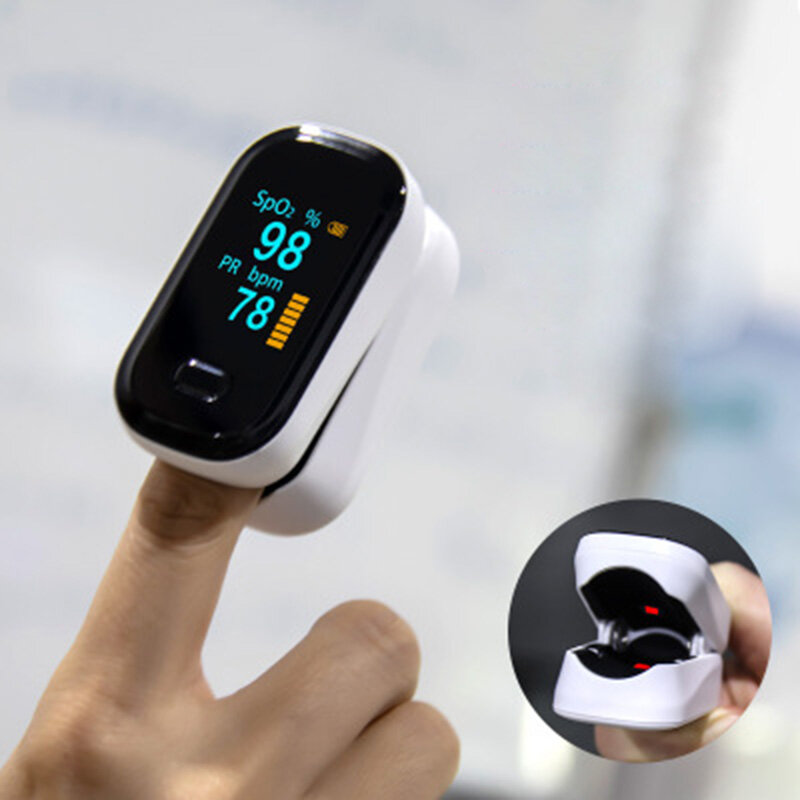
As one of the means to identify symptoms of COVID-19 infection, a pulse oximeter was also used as a test tool for accommodation and home care. The pulse oximeter can measure the degree of coral saturation, which indicates how much oxygen is contained in the blood, so it can quantify the frustration caused by the Corona 19 infection by reducing the amount of oxygen. How does a pulse oximeter measure the amount of oxygen in the blood?
Oxygen in the blood is carried by hemoglobin. Coral saturation indicates how much oxygen is carried by hemoglobin in the blood. For example, if half of the hemoglobin in the blood carries oxygen, the pulse oximeter value is 50%, and if all hemoglobin in the blood carries oxygen, it is 100%. Normal values in humans are greater than 96% and less than 95% are at risk of developing respiratory failure.
Pulse Oximeters measure the oxygen saturation in blood using light. Light is irradiated from the light emitting part toward the light receiving part. The light emitting unit can measure the amount of blood oxygen by inserting a finger into a pulse oximeter so that the abdomen is a light receiving unit with a fingernail or finger. Fingers have arteries and veins, and hemoglobin carries oxygen throughout the body through arteries. Therefore, the pulse oximeter measures the oxygen saturation of the arteries.
How to measure blood oxygen saturation with light alone. Hemoglobin measures the amount of oxygen according to how much it absorbs the irradiated light. Hemoglobin has a different color depending on the presence or absence of oxygen, oxygen-carrying hemoglobin is bright red, and oxygen-free hemoglobin is dark red. In the color difference, hemoglobin absorbs light differently depending on the presence or absence of oxygen. The more hemoglobin in the blood, the more light is absorbed by hemoglobin, and the amount of transmitted light can be reduced. Light is irradiated on the finger to measure the amount of oxygen carried by hemoglobin per unit area.
In addition, the pulse oximeter uses light with two different wavelengths. One is red light with a wavelength of 650nm, and the other is infrared with a wavelength of 950nm. It measures the light absorption rate with two types of light and the amount of hemoglobin that carries oxygen.
The pulse oximeter calculates oxygen saturation by comparing the amount of red and infrared light absorbed by hemoglobin. In addition, since oxygen saturation is measured with light, indoor light can be said to be a noise that interferes with the measurement. To suppress environmental noise such as indoor lighting, the pulse oximeter quickly switches between the two without turning on red light and infrared light at the same time. First, the red light is turned on, the red light reaches the light-receiving part through your finger, and reaches the light-receiving part even under bright lighting indoors. Then turn off the red light and the infrared light goes. Infrared rays also pass through the finger and reach the light receiving unit. The pulse oximeter then stops both red and infrared light and records the room light.
Finally, the measured indoor lighting is subtracted from the measured value and the levels of red light and infrared light are calculated. Of course, caution is needed because there is a possibility that the correct measurement result may not be obtained if the indoor light is too strong. To measure accurately, it is necessary to keep away from strong light or to cover the pulse oximeter with a cloth or hand.
In addition, even if a finger is not inserted between the light emitting part and the light receiving part, or even if you are applying nail polish to your nails, there is a possibility that the nail polish will absorb light. In order to obtain accurate measurement results with a pulse oximeter, it is necessary to insert a finger without applying anything to the finger with as much as possible blocking of indoor lighting or sunlight. Related information can be found here .


